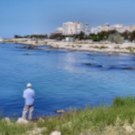Airliner crashes in Russia; 55 aboard reported dead
-
Recently Browsing 0 members
- No registered users viewing this page.
-
Topics
-
-
Popular Contributors
-
-
Latest posts...
-
0
Report Thai Police Crackdown on Criminal Empire Leaves Boss on the Run
Photo courtesy of The Nation In a decisive blow against a sprawling criminal syndicate, Thai police launched raids across 19 locations, targeting a transnational scam empire allegedly helmed by notorious crime boss Kok An. The operation, which unfolded on July 8, spanned key areas in Bangkok, Samut Prakan, and Chon Buri, marking a significant step in dismantling the illicit network. The Cyber Crime Investigation Bureau (CCIB) spearheaded this coordinated effort, focusing on a residence in Bang Phli district, Samut Prakan. Despite their efforts to apprehend Kok An, the kingpin behind extensive call centre operations in Poipet, Cambodia, remains elusive. According to sources, these operations are central to a complex web involving online fraud and large-scale money laundering. An investigation dating back to June 26 revealed the syndicate’s sophisticated reach, operating from high-rise buildings such as a 25-storey tower and the Crown Casino in Poipet. The CCIB spokesperson highlighted the structured nature of the group, noting, "The organisation functioned with distinct roles, enabling its seamless criminal activities." The syndicate relied heavily on Thai nationals, many of whom were duped or coerced into participation. These individuals were often forced to act as mule account operators, with some even detained abroad to further the operation’s agenda. The use of mule accounts and cryptocurrency played a key role in laundering their profits. Authorities discovered the properties used by the gang were owned by a Cambodian national complicit in the crimes, providing vital infrastructure for the criminal activities. The recent raids unearthed luxury vehicles and cash amounting to 27 million baht linked to the fraudulent schemes. Efforts are now underway to expand the legal net around Kok An and his accomplices. The CCIB has approached the Criminal Court to secure arrest warrants, signalling a relentless pursuit of justice. A press conference slated for later today promises to provide additional insights into the crackdown and outline the strategic measures employed to bring the crime lords to justice. The police continue to urge public vigilance, particularly in relation to suspicious activities associated with call centre scams. They emphasise their commitment to following up on all leads, aiming to eradicate the widespread fraud and protect potential victims in Thailand and beyond. Adapted by ASEAN Now from The Thaiger 2025-07-08 -
31
possibility of WW 3 in a near future
Putin alone revamped that fear, buddy, all by himself when the filthy coward attacked Ukraine. Putin needs to be crushed. You see that, right? -
20
USA New Video Footage Chilling School Attack Foiled by Teens Amid Alleged Honor Killing Attempt
I see there is a supporter of child marriage on here with his thumbs down, shameful -
58
Report Cannabis Advocates Warn of Economic Damage from Policy Shift
Wow that's quite an assumption. I wonder if it's founded upon anything even bordering on factual? It's not easy running a retail business, I see an awful lot of these cannabis shops that are not busy, overhead is high, upfront costs are high, and you can't just assume that most shops are making a lot of money. -
78
Epstein Coverup Continues
There never was a client list. We are all suffering from the Mandela Effect ... https://www.britannica.com/science/Mandela-effect -
5
Mobile banking app
This... First thing to check to see if your account is open is to try a cardless withdrawal. Then you can also try a conventional ATM withdrawal. Also, as you suggested OP, give your Wireless Payment (Tap-n-go) at try - only you have the answer to that. The message you received was that your 'mobile banking services have been temporarily blocked' - so that just means mobile banking service, you should still have functional Online Banking Services etc.
-
-
Popular in The Pub









.thumb.jpeg.d2d19a66404642fd9ff62d6262fd153e.jpeg)







Recommended Posts
Create an account or sign in to comment
You need to be a member in order to leave a comment
Create an account
Sign up for a new account in our community. It's easy!
Register a new accountSign in
Already have an account? Sign in here.
Sign In Now